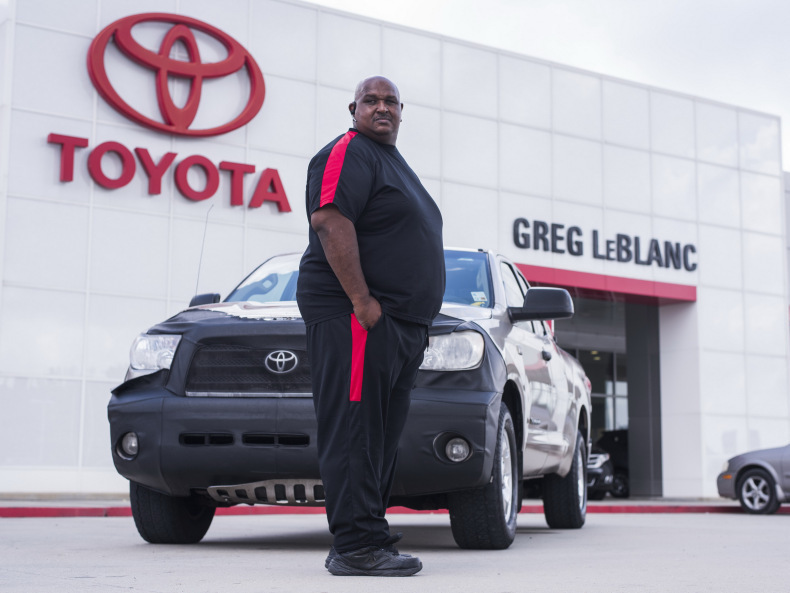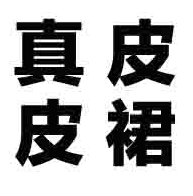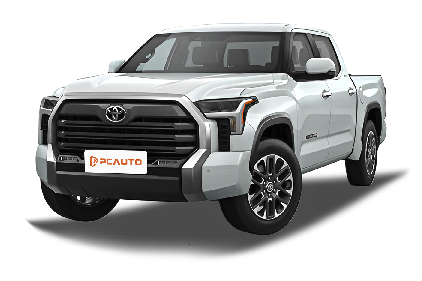Q
Are Toyota Tundras RWD or FWD?
The Toyota Tundra is a full - size pickup truck mainly targeting the North American market. It's quite rare in Malaysia. The entire Tundra lineup comes standard with rear - wheel drive (RWD), and some high-end models offer a part-time four-wheel drive (4WD) system. However, it has never had a front-wheel drive (FWD) version. This drivetrain layout aligns with its rugged positioning. The RWD system is simple, reliable, and suitable for carrying heavy loads, while the 4WD version meets off - road needs through a transfer case. This design is quite common in pickups.
For Malaysian consumers, even though the Tundra is not often seen locally, the logic behind choosing the drivetrain is similar to that of other off-road vehicles. For example, the more commonly seen Toyota Hilux in Malaysia also uses rear-wheel drive as the base configuration and four-wheel drive as an upgrade option. It's important to note that the drivetrain of a pickup significantly affects its usage. The RWD version is great for highway driving and regular cargo hauling, while the 4WD version can handle complex terrains like mud and sand. Consumers should make their choice based on their actual usage scenarios.
Special Disclaimer: This content is published by users and does not represent the views or position of PCauto.
Related Q&A
Q
How many litres is a Toyota Tundra fuel tank?
The fuel tank capacity of the Toyota Tundra varies depending on different years and configurations. The latest models usually come with a large-capacity fuel tank of about 32.2 gallons (approximately 122 liters), which is suitable for long-distance driving or heavy load requirements. This design is quite common among pickup truck models, as it can reduce the frequency of refueling and enhance practicality. For users in Malaysia, although the Tundra is not a mainstream local model, its fuel tank capacity matches its powerful V6 or V8 engine, ensuring sufficient driving range, especially suitable for scenarios that require frequent long-distance driving or off - roading.
It should be noted that the fuel tank capacity may vary slightly depending on specific models (such as SR5, Limited, or TRD Pro versions) or market configurations. It is recommended to check the official specifications or consult the dealer before purchasing a vehicle to obtain accurate information. In addition, while a large fuel tank is convenient, it also increases the overall vehicle weight, which may slightly affect the fuel consumption performance. Therefore, in daily use, one needs to balance the actual needs with fuel economy.
Q
How long will a Toyota Tundra Hybrid battery last?
The hybrid battery life of the Toyota Tundra Hybrid typically ranges from 10 to 15 years, depending on usage conditions and maintenance. The tropical climate in Malaysia may have a certain impact on the battery life. However, Toyota's hybrid battery design has taken into account the adaptability to high-temperature environments. So, as long as regular maintenance is carried out, the battery performance can be maintained for a long time.
To extend the battery life, it is recommended to avoid exposing the vehicle to extreme high temperatures for a long time, regularly check the battery cooling system, and keep the battery in an appropriate charging state. The cost of replacing the hybrid battery is relatively high, but Toyota offers a battery warranty for up to 8 years or 100,000 miles (about 160,000 kilometers), which provides additional protection for car owners.
In addition, the advantages of hybrid technology lie in its fuel economy and environmental performance. For Malaysian car owners, this can not only save fuel costs but also reduce carbon emissions, which is in line with the global environmental protection trend. If you have more questions about hybrid technology, you can consult your local Toyota dealer, and they can provide more detailed maintenance advice and technical support.
Q
How many litres per 100km does a Toyota Tundra Hybrid use?
As a full-sized hybrid pickup truck, the fuel consumption of the Toyota Tundra Hybrid varies depending on specific driving conditions and configurations. The official data shows that its combined fuel consumption is approximately between 9.8 and 10.7 liters per 100 kilometers, which is a significant improvement compared to the traditional fuel-powered Tundra (about 13-15 liters per 100 kilometers). This is thanks to its hybrid system consisting of a 3.5-liter V6 twin-turbocharged engine and an electric motor, which can provide strong power while also taking fuel economy into account.
For Malaysian users, although the Tundra Hybrid has not been officially launched in the local market, the fuel consumption performance and hybrid technology of this vehicle are worth paying attention to. Especially considering the fluctuating oil prices and the increasing environmental awareness in Malaysia, hybrid vehicles may become a practical choice in the future.
It should be noted that the actual fuel consumption is affected by the load, road conditions, and driving habits. For example, frequent acceleration or high-speed driving may result in a fuel consumption close to 12 liters per 100 kilometers, while smooth driving or urban commuting may lead to a consumption of less than 10 liters per 100 kilometers. If Malaysian consumers are interested in hybrid pickups, they can also refer to the fuel consumption data of similar models such as the Ford F-150 Hybrid (about 9-11 liters per 100 kilometers) for a horizontal comparison.
Q
Is the Toyota Tundra a hybrid or non hybrid?
The Toyota Tundra currently offers both Hybrid and Non - Hybrid versions, depending on the model year and configuration. For example, the third - generation Tundra launched in 2022 first introduced the i - FORCE MAX hybrid system. It combines a 3.5 - liter V6 twin - turbocharged engine with an electric motor, capable of outputting 437 horsepower and 790 N·m of torque, significantly improving fuel economy and power performance. In contrast, the non - hybrid version still uses a traditional fuel engine.
For Malaysian consumers, hybrid models can balance performance and energy - saving during long - distance driving or when there are heavy - load requirements. However, it's necessary to check whether the relevant versions are introduced in the local market, as the vehicle configurations in Southeast Asian regions may be adjusted according to market demand. Hybrid technology has become a global trend for pickups. Competitors like the Ford F - 150 Lightning have also launched electrified options. It is recommended to consult local dealers to confirm the latest specifications before purchasing a car. At the same time, you can compare the differences in hybrid technologies among different brands. For instance, Toyota's THS system is well - known for its maturity and reliability, making it suitable for users who value durability.
Q
What caused the Toyota Tundra engine failure?
Engine failures in the Toyota Tundra can be caused by a variety of factors, including improper maintenance, oil - related issues, or cooling system malfunctions. For example, failing to change the oil for an extended period may result in insufficient lubrication, which can lead to internal engine wear. In Malaysia's hot and humid climate, inadequate maintenance of the cooling system can also cause the engine to overheat. Additionally, fuel quality and sensor malfunctions can affect the engine's performance.
For large - displacement vehicles like the Tundra, regular maintenance is particularly crucial. It is recommended that owners follow the manufacturer's maintenance manual, use the appropriate grade of oil and fuel, and regularly check components such as coolant and belts. Malaysian owners also need to be aware of the impact of the high - temperature and rainy environment on the engine. For instance, moisture can cause electrical circuit problems, and during high - load driving (such as towing heavy objects), it is essential to ensure that the cooling system is working properly. If you notice abnormal engine noises, a decrease in power, or warning lights on the dashboard, you should have the vehicle inspected and repaired promptly to prevent further damage.
Q
Is the Toyota Tundra a reliable car?
As a full-sized pickup truck targeting the North American market, the Toyota Tundra has a good reputation for reliability. Its body-on-frame structure and well-established V6/V8 powertrain have been long-term market-tested, showing stable performance in terms of durability. It's especially suitable for some users in Malaysia who need to deal with rough terrains or heavy-load requirements.
The Tundra is equipped with a high-strength steel chassis and an optimized suspension system, which can well adapt to the diverse road conditions in Malaysia. However, it should be noted that due to its large body size, it may take some time to get used to driving it on the narrow urban roads in Malaysia.
The maintenance of the Tundra is relatively convenient under Toyota's global service system. But as an imported model, the parts supply cycle and cost may be slightly higher than those of locally assembled models.
For Malaysian consumers considering buying a full-sized pickup truck, apart from reliability, they should also take into account the actual usage scenarios. For example, whether they need to frequently enter and exit underground parking lots or narrow streets, as well as the local tax policies for large vehicles. These factors will all affect the actual usage experience.
Q
Who Produces Toyota Tundra Engines?
The engines of the Toyota Tundra are mainly designed and manufactured by Toyota Motor Corporation itself. Its production base is located at the Huntsville plant in Alabama, USA. This plant specializes in producing V6 and V8 engines for large pick-up trucks and SUVs like the Tundra. These engines are well-known for their reliability and durability, and are particularly suitable for the multi-terrain and climate conditions in Malaysia. Toyota's continuous innovation in engine technology, such as the adoption of the Dual Variable Valve Timing-intelligent (VVT-i) system and direct injection technology, not only improves fuel efficiency but also reduces emissions, which is in line with the global environmental protection trend. For Malaysian consumers, understanding the manufacturing background and technical features of the Tundra's engine can help them make a wiser decision when purchasing a large pick-up truck. Meanwhile, Toyota's local after-sales service network can also provide reliable support for vehicle owners, ensuring that the vehicles remain in good running condition over the long term.
Q
Is the Toyota Tundra turbocharged?
The Toyota Tundra currently offers two types of powertrain options: naturally aspirated and turbocharged, depending on the model year and configuration. For example, the third - generation Tundra launched in 2022 introduced a 3.5 - liter V6 twin - turbocharged engine (i - FORCE MAX hybrid system) for the first time, replacing the old 5.7 - liter V8 naturally aspirated engine. This turbocharged engine can output 437 horsepower and 790 N·m of torque, balancing both power performance and fuel economy.
For Malaysian consumers, the application of turbocharging technology in large - displacement pickups is becoming more and more common. This type of engine can provide stronger torque at low speeds, which is especially suitable for load - carrying or towing needs. It can also adapt to the local hot climate because modern turbo systems usually come with efficient cooling solutions.
It should be noted that the configurations of the Tundra may vary in different markets. It is recommended to confirm the specific specifications through the official channels of Toyota in Malaysia. In addition, regular maintenance of turbocharged vehicles (such as oil changes and cooling system inspections) is crucial for maintaining performance. This kind of knowledge is very valuable for Malaysian consumers considering buying high - performance pickups.
Q
How long do Toyota tundras last?
The Toyota Tundra is renowned for its excellent durability and reliability. Under normal maintenance conditions, it can usually travel between 300,000 and 500,000 kilometers or even more. The specific lifespan depends on factors such as driving habits, road conditions, and maintenance frequency. For users in Malaysia, the hot and humid climate may have a certain impact on vehicle components like rubber seals and electronic systems. However, as long as you regularly change the engine oil, check the cooling system, and promptly address minor issues, the durability of the Tundra can still be guaranteed. The V8 engine and sturdy frame design of this vehicle also provide a solid foundation for its long - term use. It's worth mentioning that Toyota has a relatively well - established after - sales service network in Malaysia, and there is an abundant supply of original parts, which strongly supports the long - term use of the Tundra. If you're considering buying a used Tundra, it is recommended to focus on checking the engine condition, chassis rust, and maintenance records. Usually, a well - maintained used car can still offer reliable performance. Overall, the Tundra is a durable pickup truck suitable for Malaysian road conditions.
Q
Is the Toyota Tundra petrol or diesel?
Currently, the Toyota Tundra mainly offers gasoline engine versions in the Malaysian market. Specifically, it is equipped with a 3.5 - liter V6 twin - turbocharged gasoline engine (code - named V35A - FTS), which belongs to the Toyota Dynamic Force series and is paired with a 10 - speed automatic transmission. This powertrain focuses on the balance between high performance and low fuel consumption. Although the Tundra once had a diesel version in the North American market (such as the 5.7 - liter V8 diesel engine launched in 2008), the current models no longer offer the diesel option. For Malaysian consumers, the gasoline - powered Tundra is more suitable for the local usage environment, as the gas station network in Malaysia is mainly for gasoline, and diesel vehicles have to face higher road taxes and maintenance costs.
It's worth mentioning that in recent years, Toyota has gradually reduced the R & D of diesel passenger cars globally and shifted its focus to hybrid and hydrogen energy technologies. For example, the Camry and Corolla Cross available in Malaysia already offer hybrid versions. If users need a diesel pickup with stronger torque, they can consider the locally assembled Toyota Hilux. Its 2.4 - liter and 2.8 - liter diesel engines perform better in load - carrying and off - road scenarios.
Latest Q&A
Q
What is the cheapest 2024 Range Rover?
In the Malaysian market, the most affordable model of the 2024 Range Rover lineup is the Range Rover Evoque. The starting price of its entry - level version is around RM400,000, and the actual price may vary depending on the configuration, optional accessories, and dealer promotions. As the entry - level SUV in the Range Rover family, the Evoque retains the brand's iconic luxury design language and off - road capabilities. It is also equipped with an efficient turbocharged engine and advanced technological features, such as the Pivi Pro infotainment system and the Terrain Response all - terrain feedback system, making it a great fit for both city driving in Malaysia and occasional outdoor adventures. If you have a limited budget but still want to experience the luxury of Range Rover, the Evoque is a good option. Meanwhile, the Range Rover Velar in the same series is positioned a bit higher, with a starting price of approximately RM500,000, offering more spacious interiors and a wider range of features. When purchasing in Malaysia, it's advisable to compare the promotional offers from different dealers and take into account the long - term maintenance costs, as luxury cars generally have higher upkeep expenses. However, Range Rover has a good reputation for reliability and after - sales service in the local market.
Q
Will the Range Rover Evoque change in 2024?
Based on the current information, the 2024 Range Rover Evoque is expected to undergo some updates, but there may not be significant changes to the overall design. The updates will mainly focus on the optimization of technological features and the powertrain. For example, it might upgrade the infotainment system or incorporate more efficient mild - hybrid technology to meet global emission standards. In the Malaysian market, this vehicle is likely to maintain its popular position as a luxury compact SUV and adapt to local road conditions and consumer preferences. For instance, it could offer seat materials suitable for the tropical climate or an enhanced air - conditioning system. The Range Rover Evoque has always been known for its stylish design and off - road capabilities. The 2024 model may further enhance these features while maintaining the brand's consistent high - quality. Malaysian consumers can look forward to an even better driving experience through detailed improvements while retaining the existing advantages. As for the specific changes, we still need to wait for the official announcement for confirmation.
Q
What is the Range Rover Evoque 2024?
The 2024 Range Rover Evoque is a luxury compact SUV under Land Rover. It continues the brand's iconic refined design and outstanding performance, and is specifically designed for urban driving and mild off - road needs. This vehicle has attracted a lot of attention in the Malaysian market. The 2024 model is expected to be equipped with a more efficient mild - hybrid or plug - in hybrid system, which will further improve fuel economy while maintaining Land Rover's consistent all - terrain capabilities. It comes with the Terrain Response all - terrain feedback system, making it suitable for Malaysia's diverse road conditions.
In terms of the interior, the new car is expected to use high - end leather and metal trims, and be equipped with the latest Pivi Pro infotainment system, which supports wireless Apple CarPlay and Android Auto to meet the needs of tech enthusiasts. The body design continues the Evoque's classic floating roof and hidden door handles, highlighting a sense of fashion.
For Malaysian consumers, the compact size of the Evoque is very suitable for city driving. At the same time, its luxury features and brand premium also meet the local preference for high - end SUVs. It's worth mentioning that Land Rover has a well - established dealer network and after - sales service in Malaysia, providing reliable support for car owners. As an entry - level Land Rover model, the Evoque also gives more consumers the opportunity to experience the brand's luxury and performance.
Q
How much is a 2024 Range Rover Evoque?
The pricing of the 2024 Range Rover Evoque in Malaysia varies depending on the configuration. It's estimated to start from around RM280,000 to RM350,000. The exact price depends on the selected model (such as the S, SE, or HSE versions), the powertrain (like the 2.0-liter turbocharged petrol or diesel engine), and additional features (such as premium interiors and driver assistance systems).
This vehicle continues the Land Rover family's exquisite design. It comes equipped with the latest Pivi Pro infotainment system and the Terrain Response System, making it suitable for both city driving and light off - road adventures. In the Malaysian market, the Evoque is well - received for its luxury and practicality. Local agents also offer a variety of financial packages and warranty services, making it convenient for consumers to make a choice.
It's important to note that before purchasing, it's advisable to confirm the latest prices and promotional activities with authorized dealers, as the prices may be affected by exchange rates, taxes, or configuration updates. Additionally, the maintenance cost of the Evoque is relatively high, but the service packages provided by Land Rover Malaysia can help owners reduce long - term maintenance expenses.
Q
How often should a Mercedes GLC 2024 be serviced?
According to Mercedes-Benz's official maintenance recommendations, under normal operating conditions in Malaysia, the 2024 GLC should undergo regular maintenance every 10,000 kilometers or 12 months, whichever comes first. The hot and humid climate in Malaysia, along with the congested urban traffic, may accelerate the wear and tear of engine oil and filters. Therefore, it is recommended that car owners shorten the maintenance interval to every 8,000 - 10,000 kilometers. Special attention should be paid to checking the air - conditioning system, brake fluid, and battery status.
The turbocharged engine in this model has high requirements for engine oil quality. It is essential to use fully synthetic engine oil that meets the MB - Approval 229.51/229.52 standards. In addition to regular maintenance, it is advisable to check the wheel alignment and brake pad thickness every 20,000 kilometers. Before the rainy season, pay special attention to the sunroof drain pipes and anti - rust treatment of the chassis.
The Service Care package offered by authorized dealers in Malaysia usually includes 15 core inspection items, which comprehensively cover the inspection of the transmission system, electronic devices, and safety configurations. If you often drive long distances or in dusty environments, you may consider replacing the air filter earlier.
It should be noted that strictly following the maintenance manual not only helps maintain the vehicle's optimal performance but also extends the original factory warranty. For hybrid models, it is even more crucial to conduct special inspections of the high - voltage system on schedule.
View MoreRelated News

Toyota Tundra Owner Achieves the Second Million-Mile Milestone
LienApr 18, 2025

Suzuki Fronx vs. Toyota Yaris Cross comparison, which one is more worth buying?
LienOct 5, 2025

Toyota Mystery Project teaser sparks speculation, Akio Toyoda personally involved in teaser process
JamesOct 2, 2025

Rumor: Toyota and Mazda collaborate to develop the next-generation MX-5 and GR86
AshleySep 30, 2025

Toyota Corolla Cross mid-term facelift in China, featuring a new front face and interior design
AshleySep 29, 2025
View More


















Pros
Cons